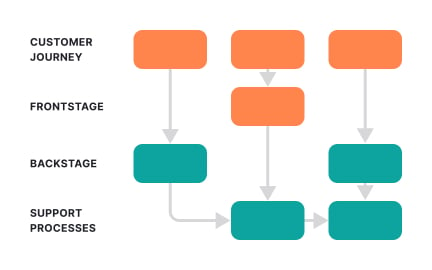Security UX
Security UX focuses on making privacy and protection features understandable, usable, and trustworthy for all users without adding stress.
What is Security UX?
Your product's security features create frustrating user experiences that lead people to circumvent security measures or abandon your platform because protection mechanisms feel obstructive rather than helpful and transparent.
Most teams implement security as technical requirements without considering user experience impact, creating security theater that annoys users while potentially providing less actual protection than user-friendly security approaches.
Security UX is the practice of designing security features and privacy controls that protect users effectively while maintaining intuitive, frictionless experiences that encourage rather than discourage secure behavior through transparent and user-centered security design.
Products with effective security UX achieve 60% higher security compliance, 40% fewer user complaints about security friction, and significantly better overall user satisfaction because protection feels supportive rather than obstructive.
Think about how companies like Apple design Touch ID and Face ID that provide strong authentication while feeling more convenient than traditional passwords, or how messaging apps like Signal create strong encryption that works transparently without requiring users to understand cryptography.
Why Security UX Matters for User Protection
Your users develop negative associations with security features because protection mechanisms create friction and confusion that makes security feel like punishment rather than valuable protection that enhances their experience.
The cost of poor security UX compounds through user behavior and competitive disadvantage. Users circumvent security controls that feel obstructive, develop security fatigue that reduces compliance, and choose competing products that provide protection without frustration.
What effective security UX delivers:
Higher security compliance because intuitive security features encourage proper usage rather than creating obstacles that users try to circumvent or avoid. When security feels helpful rather than restrictive, users embrace protection measures instead of trying to work around them.
Better user trust and confidence through security designs that communicate protection transparently while maintaining smooth user experiences that build rather than undermine platform credibility.
Reduced support burden because well-designed security features prevent user confusion and errors that generate support tickets and frustrated user interactions.
Enhanced competitive positioning as security UX becomes a differentiator that attracts security-conscious users while maintaining usability that appeals to mainstream audiences.
Improved overall product adoption through security approaches that enable rather than constrain user success while providing necessary protection against threats and privacy risks.
Advanced Security UX Strategies
Once you've established basic security UX capabilities, implement sophisticated security design and user experience optimization approaches.
Contextual Security and Adaptive Protection: Design security systems that adjust protection levels based on user context, risk assessment, and behavioral patterns rather than applying uniform security across all situations.
Security Onboarding and Education Integration: Create security education that integrates naturally with user onboarding rather than requiring separate security training that users skip or ignore.
Privacy Dashboard and User Control Design: Develop sophisticated privacy controls that give users meaningful choices about data protection without overwhelming them with technical decisions they can't evaluate effectively.
Biometric and Passwordless Security UX: Implement advanced authentication methods that improve both security strength and user convenience compared to traditional password-based approaches.
Recommended resources
Courses

UX Design Patterns with Checklist Design

Service Design

Reducing User Churn
Lessons

Making a Payment

Contact Support







